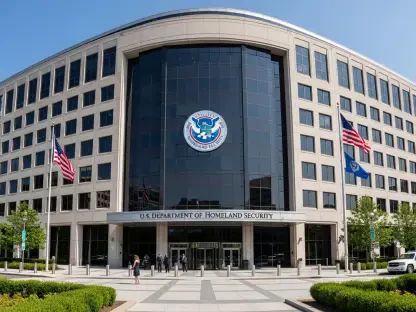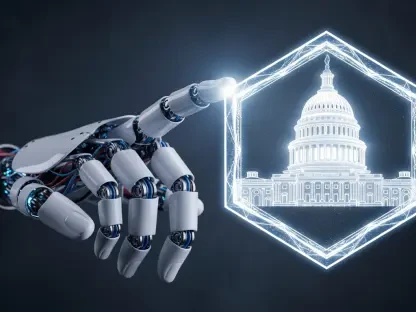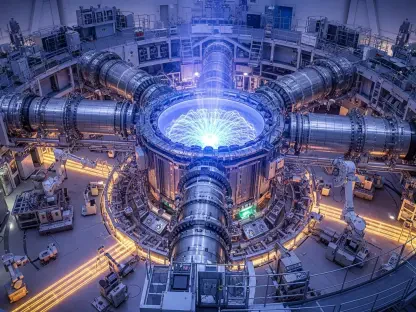Overview of U.S. Science and the Current Crisis
The United States stands at a pivotal moment in its history of scientific achievement, with a government shutdown now in its fifth week disrupting the very foundation of research and innovation that has long defined national progress. As a global leader in discovery, the nation has relied on groundbreaking advancements in technology, medicine, and environmental science to drive economic growth and maintain international influence. However, this ongoing crisis threatens to unravel decades of momentum, casting uncertainty over the future of American ingenuity.
Federal agencies such as the National Science Foundation (NSF) and the National Institutes of Health (NIH) play an indispensable role in sustaining this ecosystem by funding critical research and fostering collaboration across academia and industry. The current shutdown has halted operations at these institutions, stalling projects that address pressing societal challenges. From public health initiatives to climate monitoring, the absence of federal support creates immediate and far-reaching consequences for scientists and the public alike.
Adding to the complexity is the political backdrop, with the Trump administration’s policies intensifying the impact of the funding lapse. Key stakeholders—government researchers, university labs, and private sector partners—find themselves caught in a web of operational delays and policy uncertainty. This convergence of fiscal gridlock and ideological shifts signals a deeper threat to the structures that have historically propelled U.S. science forward.
Immediate Impacts of the 2025 Shutdown
Operational Disruptions and Research Delays
The shutdown has brought scientific operations to a grinding halt, with tens of thousands of government scientists furloughed and new grant opportunities suspended indefinitely. Laboratories within federal agencies have shuttered, leaving ongoing experiments in limbo and delaying critical breakthroughs. This disruption extends beyond government walls, affecting countless research initiatives that depend on federal oversight and resources.
Data collection, a cornerstone of evidence-based policymaking, has also been severely impacted. Essential programs monitoring public health trends, environmental changes, and economic indicators have ceased, creating gaps that could take years to address. For instance, paused surveillance of infectious diseases risks undermining national readiness for potential outbreaks, while halted climate studies limit understanding of urgent ecological shifts.
Universities, heavily reliant on federal contracts, face cascading effects as well. Staff layoffs have begun at institutions unable to sustain payroll without incoming funds, and research projects critical to academic advancement have been postponed. The ripple effect of these interruptions threatens not only current endeavors but also the pipeline of future innovation.
Financial and Institutional Strain
Financial distress looms large for federal employees and researchers who have gone weeks without pay, with no assurance of back pay once the shutdown resolves. This economic hardship compounds the stress of an already uncertain situation, pushing many to seek alternative income sources or consider leaving the field altogether. The personal toll on these professionals reflects a broader crisis of morale within the scientific community.
Institutionally, the shutdown has created a backlog of paperwork, payments, and peer reviews that will take months to clear even after funding resumes. Agencies like the NSF and NIH face monumental challenges in processing delayed applications and disbursing funds, further stalling research timelines. This administrative bottleneck exacerbates the operational chaos and hinders timely recovery.
Budgetary uncertainty also plagues research institutions as they struggle to plan for future initiatives. Universities and labs, already grappling with tight finances, must now navigate an unpredictable funding landscape. The strain on resources and planning capacity undermines their ability to maintain momentum in critical areas of study, casting a shadow over long-term scientific goals.
Challenges Beyond Funding Lapses
The duration of the current shutdown, coupled with the absence of a clear resolution, amplifies its impact far beyond typical funding interruptions. Unlike shorter lapses in the past, this prolonged crisis risks creating permanent damage to research continuity. Projects requiring consistent data over extended periods, such as longitudinal health studies, face irreparable setbacks due to missed collection windows.
Systemic issues within U.S. academia add another layer of difficulty, as declining international student enrollment and financial instability already pressure research institutions. These preexisting challenges make universities less equipped to weather the shutdown’s effects, with many lacking the reserves to sustain operations independently. The compounded strain threatens to weaken the academic backbone of American science.
Mitigation strategies, such as university contingency funding or partnerships with private entities, offer limited relief in the face of such widespread disruption. While some institutions have tapped into emergency reserves, these resources are finite and cannot replace sustained federal support. Private sector collaboration, though promising in specific cases, lacks the scale and scope to address the systemic gaps left by the shutdown, leaving the scientific community in a precarious position.
Policy Shifts and Regulatory Overreach Under the Trump Administration
The Trump administration’s broader agenda to expand executive control over scientific institutions marks a significant departure from traditional governance models. Efforts to centralize authority over federal grantmaking have raised alarms among researchers who fear a loss of autonomy in setting research priorities. This push for control introduces uncertainty into a field that thrives on independence and peer-driven inquiry.
Specific actions, including redirecting unspent research funds to other priorities and threatening layoffs of civil servants, underscore a troubling trend of ideological influence over science. Proposals to eliminate programs deemed inconsistent with presidential goals further erode the objectivity that underpins federal research. Such moves challenge the constitutional balance of power, particularly congressional authority over federal spending, and risk politicizing scientific endeavors.
Additionally, the administration’s attempts to shape university policies on issues like campus speech, gender identity, and admissions have sparked debates about academic freedom. These interventions threaten the traditional social contract between government and higher education, which exchanges funding for public benefits while preserving institutional independence. Comparisons to authoritarian models, such as China’s centralized approach to science, prompt questions about whether such tactics align with democratic principles of innovation and open inquiry.
Future Outlook for U.S. Science and Global Competitiveness
Looking ahead, the long-term implications of the shutdown and associated policy reforms pose serious risks to American science and innovation. Potential cuts or reallocations of research budgets under heightened executive control could reshape the landscape of federal funding for years to come. If sustained, these changes might divert resources from foundational research toward politically favored initiatives, stifling diverse exploration.
Geopolitically, the stakes are high as China continues to emerge as a formidable technological rival. The U.S. must contend with whether it can maintain its historical edge in innovation amid internal disruptions and shifting policy priorities. From 2025 to 2027, the trajectory of American research could hinge on the resolution of these tensions, with global leadership in science hanging in the balance.
Resilience may yet emerge through private investment and international collaboration, though these avenues face their own challenges. Evolving research security measures, global economic fluctuations, and domestic political stability will all shape the path forward. Despite the uncertainty, opportunities for adaptation exist, particularly if stakeholders can forge new partnerships to bolster the research ecosystem against future crises.
Conclusion and Path Forward
Reflecting on the tumultuous events of this year, the dual crisis of operational disruptions from the government shutdown and systemic policy reforms under the Trump administration has left an indelible mark on U.S. science. The immediate toll on researchers, institutions, and critical projects underscored the fragility of progress in the face of political deadlock. Meanwhile, broader shifts toward executive overreach challenged the very principles of autonomy that have sustained scientific inquiry for generations.
Moving forward, actionable steps emerge as vital to navigating this landscape. Stakeholders across government, academia, and industry are urged to advocate for a bipartisan resolution to restore funding stability. Protecting congressional oversight of federal budgets stands out as a key safeguard against further erosion of scientific independence. Additionally, strategic planning to attract international talent and secure private funding offers a buffer against recurring disruptions.
Ultimately, the path ahead demands a renewed commitment to balancing political challenges with the pursuit of discovery. By fostering resilient research ecosystems and prioritizing innovation over ideology, the U.S. can reclaim its footing on the global stage. The lessons of this crisis point toward a future where collaboration and foresight will be essential to preserving leadership in science and technology.









